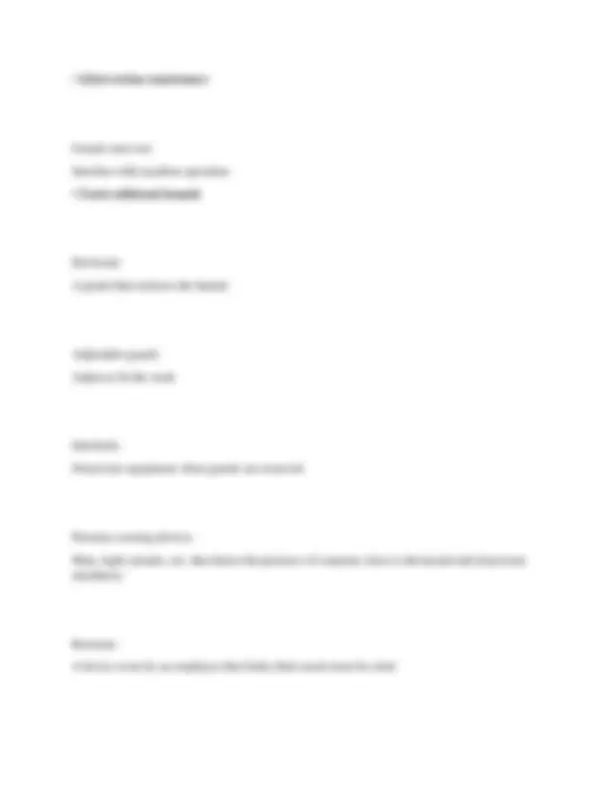



































































Study with the several resources on Docsity

Earn points by helping other students or get them with a premium plan


Prepare for your exams
Study with the several resources on Docsity

Earn points to download
Earn points by helping other students or get them with a premium plan
Community
Ask the community for help and clear up your study doubts
Discover the best universities in your country according to Docsity users
Free resources
Download our free guides on studying techniques, anxiety management strategies, and thesis advice from Docsity tutors
A comprehensive overview of safety principles, risk management practices, and occupational health concepts relevant to csp 2025. It covers key topics such as risk identification, analysis, and control, safety program development, accident investigation, and training. The document also includes explanations of various safety theories, management principles, and statistical concepts related to safety performance.
Typology: Exams
1 / 73

This page cannot be seen from the preview
Don't miss anything!


































































Safety The state of being relatively free from harm, danger, injury, or damage Risk A measure of both the likelihood(probability) and consequences(severity) of all hazards of an activity or action What are two aspects of Risk? The measure of probability and severity The five steps of the risk management process?
Does-Response Relationship Probability of getting a disease increases with the dose Threshold Risk Models "The dose makes the poison" There is a safe level of exposure No Threshold Risk Model Used in ionizing radiation There is no safe level Calculate OSHA Total Incident Rate (Total recordable injuries * 200,000) / Total Hours Calculate OSHA DART Rate (# DART Cases X 200,000) / Total Hours Calculate OSHA Severity Rate (# Lost Workdays X 200,000) / Total Hours
A documented strategy for getting something accomplished; it may or may not be implemented Group A number of individuals having a unifying relationship Project An undertaking to complete a specific task or goal (have a definite start and end point) Gantt Chart A bar chart used to illustrate a project schedule Heinrich 88% of accidents caused by unsafe "acts" (disproved) New theory - 3 E's Engineering, Education, Enforcement (Enthusiasm) *4th added by Bowen McGregor Theory Theory X Theory Y Theory X
Mazlow's Hierarchy of Needs
They set the policies and objectives Chief Executive Officer CEO Sets the tone for Safety Leads by example Safety Objectives
A Quality Standard "Say what you do and do what you say" ISO 9001 Elements? Plan Do Check Act ISO 14000 Environmental only Management tool to enable organizations to identify and control environmental impacts, continually improve environmental performance and to implement a systematic approach to setting and achieving environmental objectives. What ISO is safety There is not one! OHSAS 18000 Voluntary international standard Similar to OSHA VPP
For safety and health To provide management with a tool to reduce the risk on injuries, illness and fatalities Plan, Do, Check, Act model 5 Key Elements of ANSI Z
Sx Standard Deviation How many data points are within 1 standard deviation of the mean 68% How many data points are within 2 standard deviations of the mean 95% R^ The closest correlation is near 1 Healthy Worker Effect Workers tend to be healthier than the population as a whole. Role of the Safety Manager Internal consultant to the organization Functional Authority The authority to act.
3 Types of Organizational Charts
Force uniformly applied to a surface area Force The change in momentum over the change in time Weight is variable and depends on Gravitational force Mass is/is not constant regardless of location. Is constant What determines the extent of injuries from an electric shock? Current and flow
Shortcut for pressure formula if the liquid is water P=height x 0.433 (psi of H2O) Mega 10^6 = 1,000, Kilo 10^3= F Future Value P Principal today i Annual interest rate as a decimal n Number of years
Atomic number The number of protons. This number defines the element Atomic mass The number of protons and neutrons in the nucleus Mole Avogadro's number of units, the gram molecular weight (MW) is the mass of one mole of molecules. Avogadro's number 6.02 x 10^ Molar concentration (M) Molarity = Moles Solute/Liters of Solution Molecules One or more atoms bound together; the basic unit of non-elemental substances. Bonding Sharing or exchanging of electrons by atoms
Ionic bond An exchange of electrons so an element has 8 electrons in its outer shell. Covalent bond Sharing of electrons Boiling point The temperature at which a substance changes from a liquid to a gas Melting point/freezing point The temperature between the solid and liquid phases of a substance. Oxidizer A substance that enhances a reaction, usually by adding oxygen. Specific Gravity The ratio of the density of the substance compared to water's density. Substances with specific gravity >1 will sink, if < 1 will float. Vapor Density The mass per unit volume of a vapor compared to air. Substances with Substances with specific gravity >1 will sink, if < 1 will easily disperse.